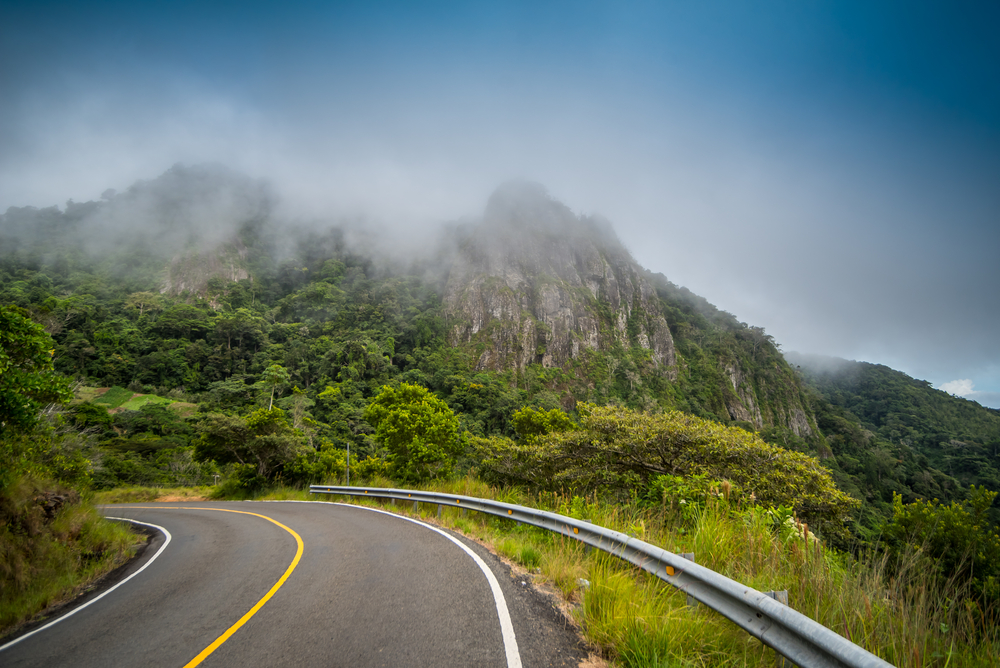Altos de Campana Overview
Altos de Campana National Park, known locally as Parque Nacional Altos de Campana, is located in the western part of Panama in the province of Panamá Oeste. It spans approximately 19 square miles (50 square kilometers) and is recognized as Panama’s first national park, established in 1966.
This protected area lies within the Talamanca mountain range and features rugged terrain with steep hills, deep valleys, and dense tropical forests. The park is particularly known for its cloud forests, which are draped in mist for much of the year, creating a lush and humid environment that supports a wide array of plant and animal life.
Cerro Campana, the park’s highest peak, rises to approximately 3,280 feet (1,000 meters) and offers panoramic views of the Pacific coastline, the Bay of Chame, and even the distant islands of the Gulf of Panama.
The landscapes within Altos de Campana National Park are diverse, with a mix of lowland tropical rainforest and high-altitude cloud forest. The park is home to a vast variety of plant species, including towering ceiba trees, strangler figs, and orchids, as well as dense mosses and ferns that thrive in the humid conditions.
The cloud forest vegetation is particularly striking, with epiphytes clinging to tree branches and bromeliads adding bursts of color to the green canopy. Seasonal waterfalls cascade down the cliffs, and small streams flow through the valleys, providing vital water sources for wildlife.
The park supports a rich diversity of wildlife, including several rare and endemic species. Among its most notable inhabitants are mammals such as ocelots, jaguarundis, agoutis, and tamanduas. Birdwatchers are drawn to the park for its impressive avian diversity, which includes species like the black-and-white hawk-eagle, the ornate hawk-eagle, and the elusive three-wattled bellbird, whose distinctive call echoes through the forest.
The resplendent quetzal, a species revered by ancient Mesoamerican cultures, can also be spotted here, making the park a prime destination for birding enthusiasts. Additionally, the park is home to several species of reptiles and amphibians, including brightly colored poison dart frogs and the endemic Panamanian golden frog, though sightings of this critically endangered species are rare.
Altos de Campana National Park is a popular destination for hiking and nature observation, offering a variety of trails that wind through the lush forest and lead to scenic viewpoints. The Sendero La Cruz trail is one of the most frequented paths, providing a moderate hike that rewards visitors with sweeping views of the surrounding valleys and the Pacific Ocean.
The park is also an important site for scientific research, as it plays a crucial role in the conservation of Panama’s cloud forest ecosystems. Visitors can engage in guided tours led by park rangers or local experts, which provide insights into the region’s ecology and conservation efforts.
One of the main conservation challenges faced by Altos de Campana National Park is the threat of deforestation and land encroachment due to expanding agricultural activities.
However, conservation efforts have been largely successful in maintaining the integrity of the park, thanks to its status as a protected area and ongoing environmental education programs. Partnerships between local communities and conservation organizations have helped raise awareness about the park’s ecological importance and the need to protect its biodiversity for future generations.










































































